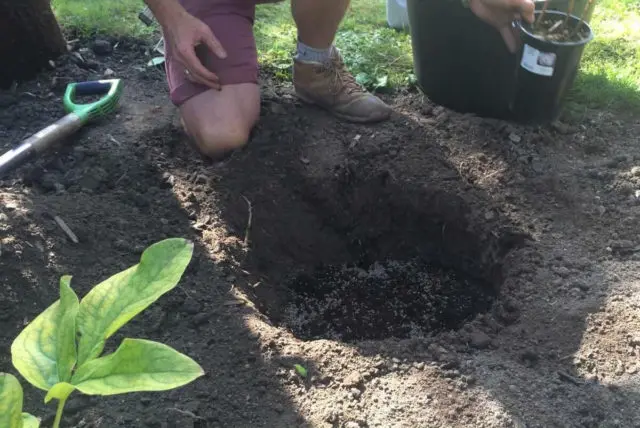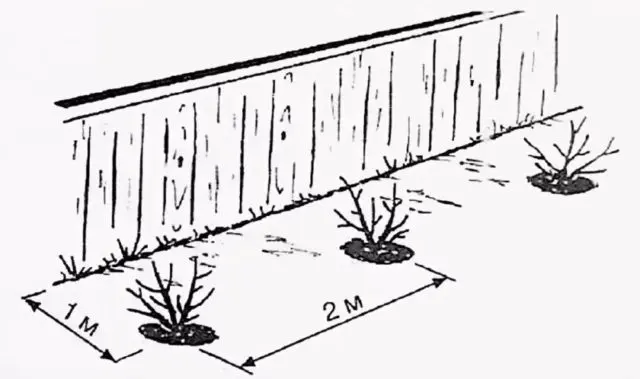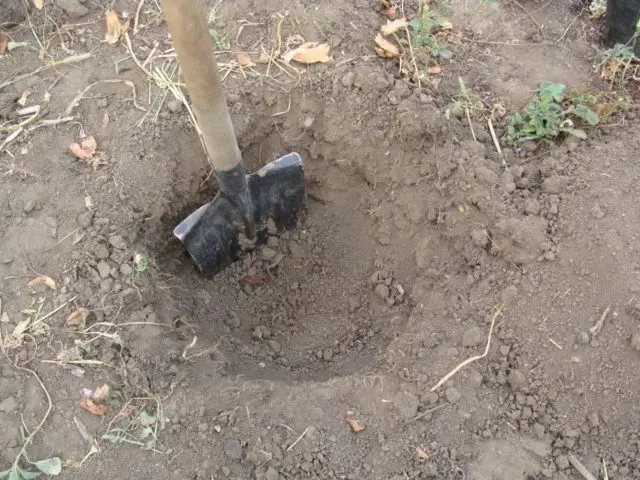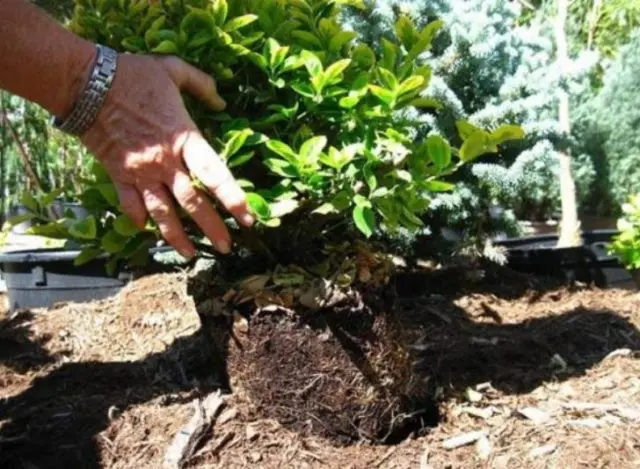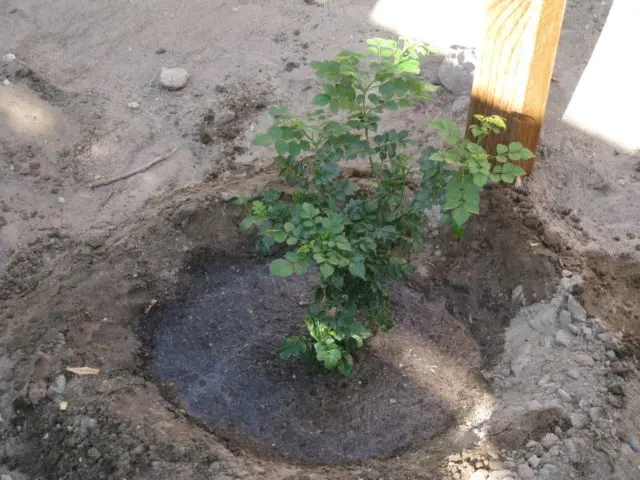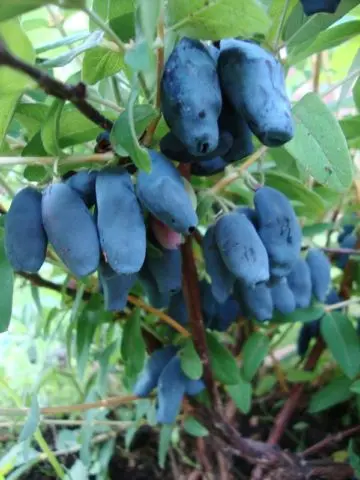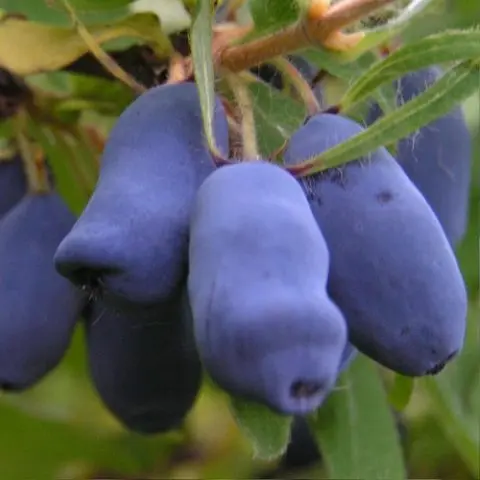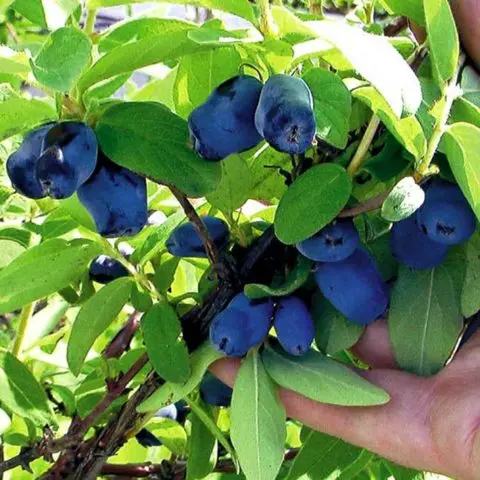Contents
Honeysuckle is famous for its healthy berries, which is why it is popular. The description of the Volkhov honeysuckle variety will allow you to decide on the choice of a berry bush for your site.
This national culture was created by specialists from Leningrad. The parent variety is Pavlovskaya honeysuckle. Since 1999, the culture has been included in the State Register and recommended for cultivation in almost all regions of Our Country.

Blue berries, covered with a bluish bloom, have beneficial and healing properties.
Description of the edible variety of honeysuckle Volkhov
If you look at the external signs, then the edible blue honeysuckle of the Volkhov variety is difficult to distinguish from other representatives of the culture. But this is an apparent dissimilarity, since the plant has qualities that are unique to it.
Bush
Bush with an oval dense crown and dark green flat leaf blades. It should be noted that the leaves are quite wide.
Numerous branches of the skeleton are thin but strong. Volkhov’s honeysuckle grows up to 2 m.
Berries
The fruits of the Volkhov variety are bluish-gray, elongated in length (at least 2 cm). The top of the berry is pointed. The mass of one honeysuckle is about 1 g. The skin is thin, but dense.
The berries are sweet, the acid is almost not felt. But the strawberry aroma will not leave anyone indifferent.
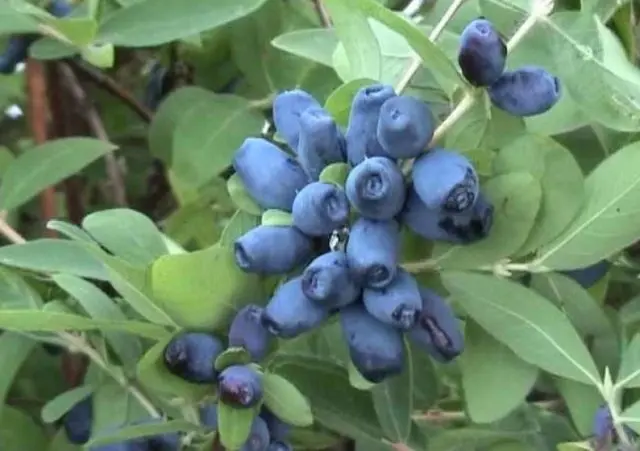
This is a dessert variety, tasters give it 4,7 points
The chemical composition of the berries is also attractive. They contain:
- dry matter – 19%;
- sugar – 8,4%;
- fructose – 2%;
- vitamin C – 77 mg;
- vitamin P – 10,35 mg;
- provitamin A – 0,5 mg;
- Vitamin B1 – 3 mg;
- Vitamin B9 – 10 mg.
TECH SPECS
Volkhov’s honeysuckle belongs to varieties of medium-early ripening. You can harvest in early June in warm regions. In cooler areas – 7-12 days later. One bush gives an average of 2 to 3,5 kg of delicious fruits.
It is frost-resistant, therefore it is grown in regions where in winter the thermometer drops to 40 degrees. This allows you to reduce labor costs when preparing Volkhov’s honeysuckle for wintering.
Since harvesting can be done with the help of machinery, the crop is planted on an industrial scale, for example, on farms.
Advantages and disadvantages of the variety
Like any garden crop, the Volkhov honeysuckle variety has its pros and cons.
Positive sides:
- weak crumbling;
- winter hardiness of honeysuckle;
- unpretentiousness of cultivation and care;
- the ability to transport dense berries over long distances;
- long-term storage of the harvested crop;
- pleasant taste and useful properties of fruits.
Cons of honeysuckle:
- small fruits;
- the need to place pollinating plants on the site;
- late dates for the start of fruiting after planting – after 3-4 years.
Planting and caring for honeysuckle Volkhov
As already noted in the description and characteristics of Volkhov’s edible honeysuckle, the culture is unpretentious in cultivation and care. You just need to take care of choosing the right place in advance, as she does not like transplants.
Terms of planting
According to experienced gardeners, planting honeysuckle on the site is best planned for the beginning of autumn. Seedlings can be of different ages, even 3-4-year-old bushes take root well. You only have to shorten the shoots to 50 cm.
Selection and preparation of the landing site
It is necessary to plant a variety culture in well-lit areas, since a lack of sun can drastically reduce the taste of berries and slow down the development of honeysuckle. The bush itself can be constantly under the sun’s rays, but the lower branches should be in the shade. Plants feel great next to a fence or hedge, which will protect plantings from winds and drafts.
The Volkhov variety prefers fertile, moist soil. Sandy soils are not suitable for the plant, as are wetlands where groundwater is close to the surface. In this case, the root system will suffer, which will lead to a decrease in the immunity of the plant.
When planning a crop planting, you need to prepare the site in advance:
- Shed the soil well.
- Dig a hole 2-3 weeks before planting.
- Fill it with a nutrient mixture consisting of humus, potassium salt (70 g), superphosphate (15 g).

If seedlings at the age of six years are chosen for planting, then the additives must be doubled.
- Heavy soils should be diluted with peat, sawdust, coarse sand.
- In the lowlands at the bottom of the pit, it is necessary to make a thick layer of drainage.

The optimal scheme for planting honeysuckle, allowing the bushes to develop well and bear fruit
Rules for planting a variety of honeysuckle Volkhov
When planting honeysuckle on the site, you need to clearly follow the algorithm:
- Since the bushes of the Volkhov variety are high, at least 2 m is left between them.
- The pit should be 60×70 in size.

Drainage must be poured at the bottom with a layer of about 20-25 cm
- Wood ash (10 kg), superphosphate (1 g) are added to 200 kg of compost. Everything is thoroughly mixed and poured into the hole.
- Pour out two buckets of warm water.
- After it is absorbed, landing begins. The roots of the shrub are straightened and set in the center of the hole.

Seedlings with a closed root system are easier to plant
- Honeysuckle is covered with soil, and the root neck remains above the surface at a height of 3-4 cm.

The earth is compacted and well watered
- The root zone is covered with mulch.

Mulching will help retain moisture in the soil.
Watering and feeding
The roots of Volkhov’s honeysuckle are superficial, so the soil should not be allowed to dry out.
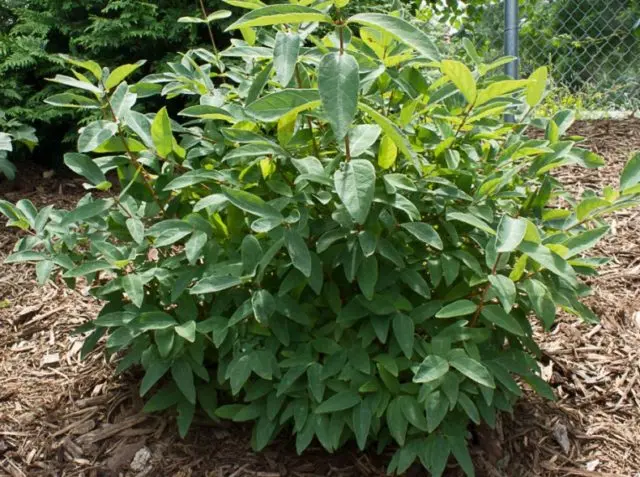
The plant does not tolerate stagnant water, otherwise the roots will begin to rot
Watering should be moderate. Only in the heat should the amount of water be increased, especially at the time when the fruits begin to form and pour.
Feed the bushes several times:
- in early spring, when the snow is just beginning to melt, the Volkhov honeysuckle variety needs nitrogen fertilizers;
- after the appearance of foliage, organic matter is used as top dressing;
- during budding, flowering and pouring of berries, plants need to be poured with an ash solution;
- before preparing for winter, so that honeysuckle can better endure frosts, fertilizers containing potassium and phosphorus are applied.
Trimming
Pruning is an important event in the cultivation of Kamchatka Volkhov honeysuckle, but it must be started two years after planting.
Sanitary and shaping pruning is carried out to remove damaged branches, as well as those that have grown inside the bush, otherwise thickening cannot be avoided. Volkhov’s honeysuckle grows slowly, so pruning is done after 2-3 years, so as not to reduce the yield.
As for the anti-aging haircut, it is carried out on bushes older than 15 years. Moreover, you need to remove no more than two branches annually, otherwise the bush will dry out.
Wintering
As already noted in the description, the Volkhov variety is frost-resistant. And in the spring, when the column drops to 8 degrees, the shoots and buds do not suffer. In snowy regions, shelter of adult bushes is not required. Where there is no precipitation in winter, it is necessary to insulate the root zone with mulch.
But seedlings 2-3 years after planting are recommended to be additionally protected with spruce branches. Work begins after the establishment of an average daily temperature within -3 degrees.
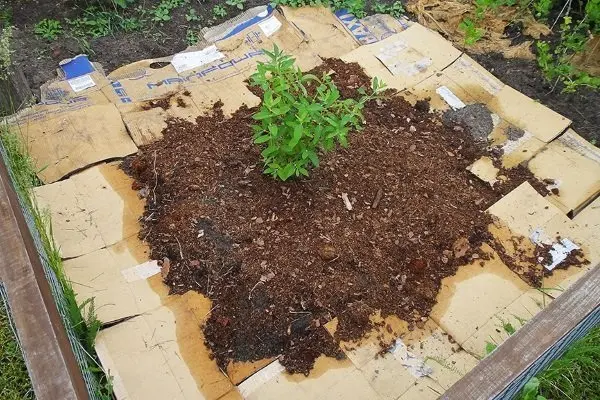
Can be used as mulch humus, fallen leaves, cardboard
Reproduction
Volkov’s honeysuckle is propagated by cuttings or by dividing the bush. Both methods are suitable for amateur gardeners. You just need to remember that planting material is cut from young green shoots.
Volkhov honeysuckle pollinators
Volkhov’s honeysuckle needs pollinating plants; without them, the yield will be minimal. The following species should be planted on the site:
- Amphora;

- Pavlovskaya;

- Azure.

Diseases and pests
Mature plants are resistant to many diseases. But young bushes are often affected by pests: aphids or honeysuckle borers.
It is necessary to deal with the problems that have arisen with the use of specialized insecticides or folk remedies. There is no need to wait until mass damage to honeysuckle begins, but to carry out preventive measures.
Conclusion
The description of the Volkhov honeysuckle variety will help gardeners decide on the choice of plants. As a result, bushes with tasty and healthy berries will appear on the site. They can be eaten fresh, make jam, compotes.










